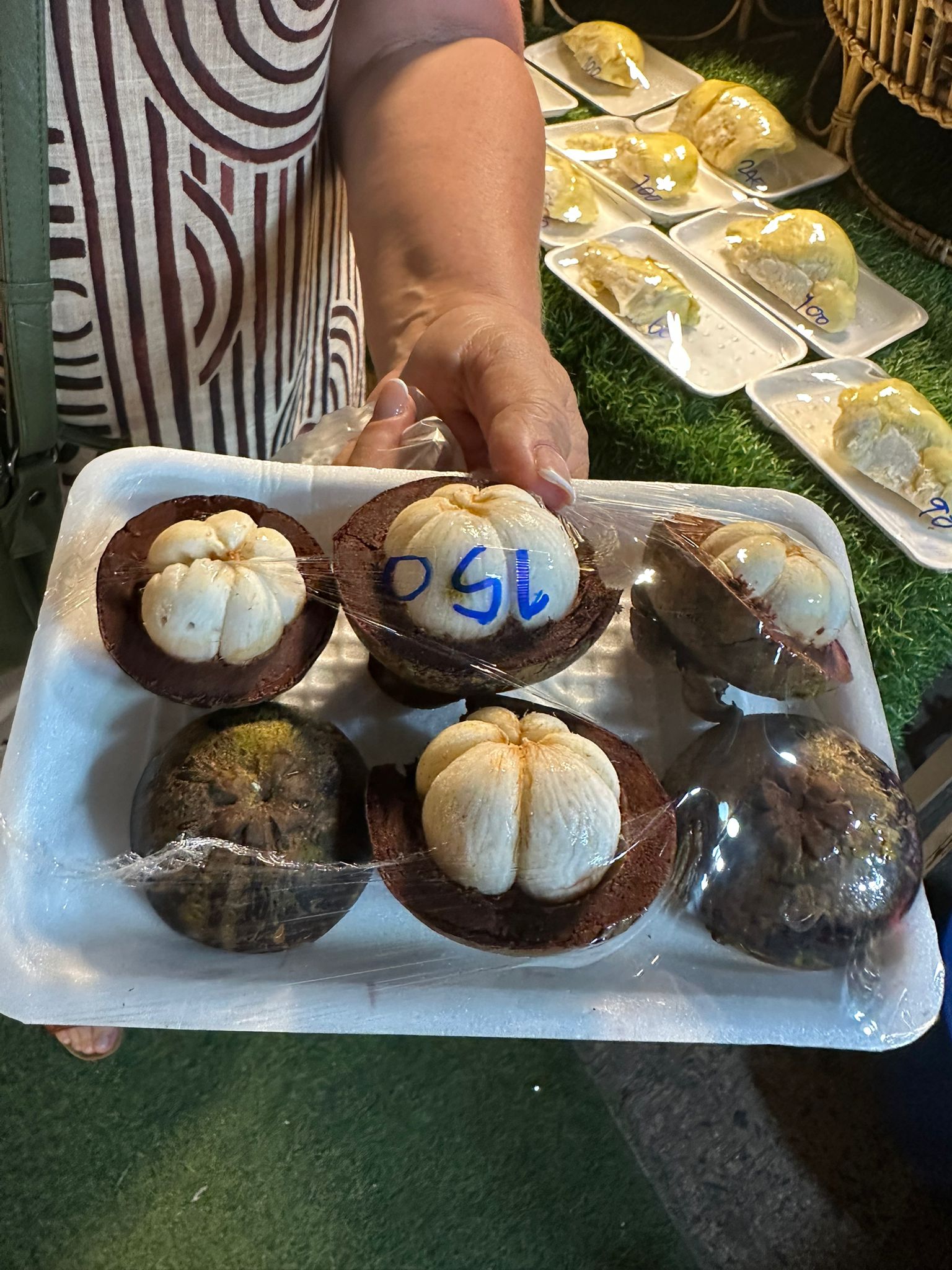The moment feels warm and close, like the air itself is leaning in to listen. The hand holding the tray of mangosteen has that easy market confidence: a casual grip around something ordinary yet somehow special. The mangosteens sit like small planets, dark purple shells split open to reveal pale, petal-like flesh. Their insides look like they were carved by careful fingers, soft and almost glowing under the stall’s bright lights. But it’s what sits in the background that tells the real story. On those white trays laid out over the artificial grass — plump, golden, heavy — is durian. The King of Fruit, though “king” here is less royal and more cosmic trickster. People don’t agree about durian. They don’t even agree about what it is. For some, it’s heaven — custard-rich, caramel-sweet, like ice cream that fell in love with cheese. For others, it’s something like a warm onion left on a sun-baked windowsill for too long. There is no polite middle ground. Durian doesn’t allow it.

If you stand near a pile of durian long enough, you’ll hear it happen. Someone passes by and their eyes widen in pure delight, the kind that comes from childhood memories or late-night cravings. They walk faster, like the fruit is calling them by name. Right behind them, someone else will recoil, physically stepping back, as if the scent crawled up their nose and hit some alarm switch. And it is a scent with presence — thick, creamy, a little wild, like something that can’t be domesticated. Durian isn’t trying to be universally liked. It knows exactly who it’s for. It offers itself with almost arrogant honesty, the kind that says: If you understand me, we will be close forever. If not — that’s fine. I was not made for everyone.
This is why the pairing with mangosteen feels almost poetic. At this market stall, the mangosteen sits in the foreground like the gentle diplomat. Cooling, mild, a little floral, soft on the tongue. It’s the kind of fruit you offer to someone who needs reassurance. Meanwhile, just a step behind, the durian rests on those trays, unbothered, impossible to ignore. The two fruits are often eaten together in Southeast Asia. One is heat, one is cool. One is bold, one is tender. They’re like two friends with completely different personalities who somehow complete each other.
Maybe that’s why the scene here feels so full, even in a simple market moment. It captures a small truth about taste, memory, identity — the way we attach stories to what we eat. The person holding that tray might love durian or might avoid it completely, but they’re part of this moment of choice, curiosity, taste, and maybe even a bit of courage. Because loving durian sometimes feels like belonging to a secret club, and hating it sometimes feels like opting out of something intense and unforgettable. Either way, everyone has an opinion, and that’s what makes it fascinating. Durian doesn’t create neutrality. It creates conversation, laughter, wrinkled noses, and delighted sighs. It creates *stories*. And under the neon buzz of the Bangkok night market, that feels like the whole point.
Leave a Reply